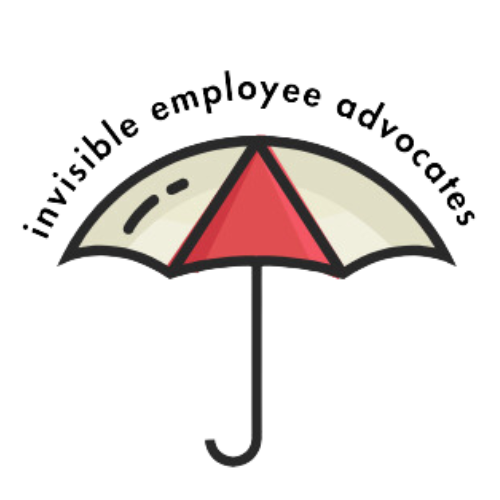Working Caregiver ERGs: Influential or Insignificant? (Blog 2/11/25)
As you read this blog, we would like you to consider your views regarding the following questions: Do you think working caregiver Employee Resource Groups (ERGs) have the power to influence the organization toward a more caring workplace that is more supportive of this segment of their workforce? Or, are you of the mindset that these ERGs (and ERGs in general) have little to no impact on the organization’s decision-making and direction around caregiving issues or otherwise?
Before we move too quickly into the substance of this topic, let’s first clarify what we mean by the term ERGs. This term refers to employee-led groups that come together based on common interests and/or characteristics such as ethnicity, national origin, parental status, caregiver status, gender identity, etc. A major goal is to provide support by creating a safe space for members to share experiences and challenges. These groups operate with the company’s approval, oversight and financial support. The first ERG groups appeared as far back as the 1960’s and were formed around the prominent issues of those times (e.g. racial equity, gender equity, etc.). Since then these groups have evolved to include common interests (e.g. aging workers, working parents, etc.).
Okay, now that we have that out of the way, let’s move on to the crux of our discussion. The question on the table is whether ERGs are tools that help promote positive organizational change or whether their existence is inconsequential. The short answer to this question is – It depends.
Stripped down to the very core of the issue, it depends primarily on two things: 1) The ability of ERG participants to identify and advocate their shared needs to the company and 2) The willingness of companies to value and support their ERGs by implementing needed change. Don’t get us wrong. We know that simply requesting something doesn’t mean it’s a done deal. At the heart of the matter is whether organization leaders value and recognize their ERG’s as resources they can tap into to inform better business decisions and help cultivate better work cultures for all employees. It can be a win-win-win proposition. An ERG’s positive impact can be seen with employees, the organization, and the consumers/customers the organization serves.
In the past, companies may have pointed to the mere existence of their ERGs as evidence of their support for equality and fairness in the workplace. However, the presence of ERGs alone does not necessarily translate into authentic organizational support for positive workplace change.
In their effort to walk the talk, companies are focusing on providing more than just lip service to their ERGs. In fact, an AARP article points out that since 2020, support for ERGs has been expanded by 35% of companies. Employers have started to recognize and harness these groups as power sources for substantive change. The article went on to say:
“Ergs – particularly those focused on care for aging parents or elderly spouses with special needs as they age – are slowly transforming the dynamics of the American workplace.”
(AARP, “Why More Employers Are Investing in Caregiver ERGs, by Bruce Horovitz, March 05, 2020).
Much of the current data related to ERGs characterizes these groups as “strategic assets” to the business as well as to the employees as follows:
Benefits to the company (and employees)
Informing product development and innovation
Promoting an inclusive workplace
Building positive company image and community relationships
Strengthening the company’s ability to attract and retain the best talent
Providing development opportunities for participants to grow into leadership
roles
(Forbes, The Impact of Employee Resource Groups In The Workforce, by Kalina Bryant, September 15, 2023; Homethrive, How Caregiver ERGs Help Your Employees, February 19, 2024).
Benefits to the employees (and the company)
Help to attract employees and strengthen employee engagement within the organization
Creates a forum for employees to exchange ideas and mutual learning
Promotes a sense of belonging so that employees can thrive personally and professionally
- Provide opportunities for individual employees to have a voice and increase their
visibility
(Forbes, Five ERG Best Practices For Creating An Inclusive Culture, by Crystal Williams, October 25, 2022).
Conclusion
Going back to our initial question of whether ERGs are influential or insignificant, we originally responded by saying – It depends. We are going to stick with that response. To be influential and play a substantive role in the organization’s success requires ERG members to step forward and communicate with their employers regarding the support they need. Likewise, to be able to use these groups as valuable contributors to the business, companies must be willing to provide them with the safe space they need to come together, listen to their concerns and needs, and offer meaningful ways to address them. So whether ERGs are influential or insignificant depends to a large extent on the employees and the companies involved.
Questions:
Employees, if you are a member of a working caregiver ERG, have you worked together to identify what you need from the company to be successful in your dual roles of working while caring? Have you communicated your needs to the company?
Employers and people managers, have you paved the way to empower your working caregiver ERGs by creating a supportive work environment? Do you listen to their concerns and partner with them to deliver viable solutions?
Is your company’s work culture one that helps attract and/or retain working caregivers? If not, what can you do as an ERG member or a people manager to help move the culture in that direction?
Until the next blog!
Thank you for stopping by, reading, and for caring!
